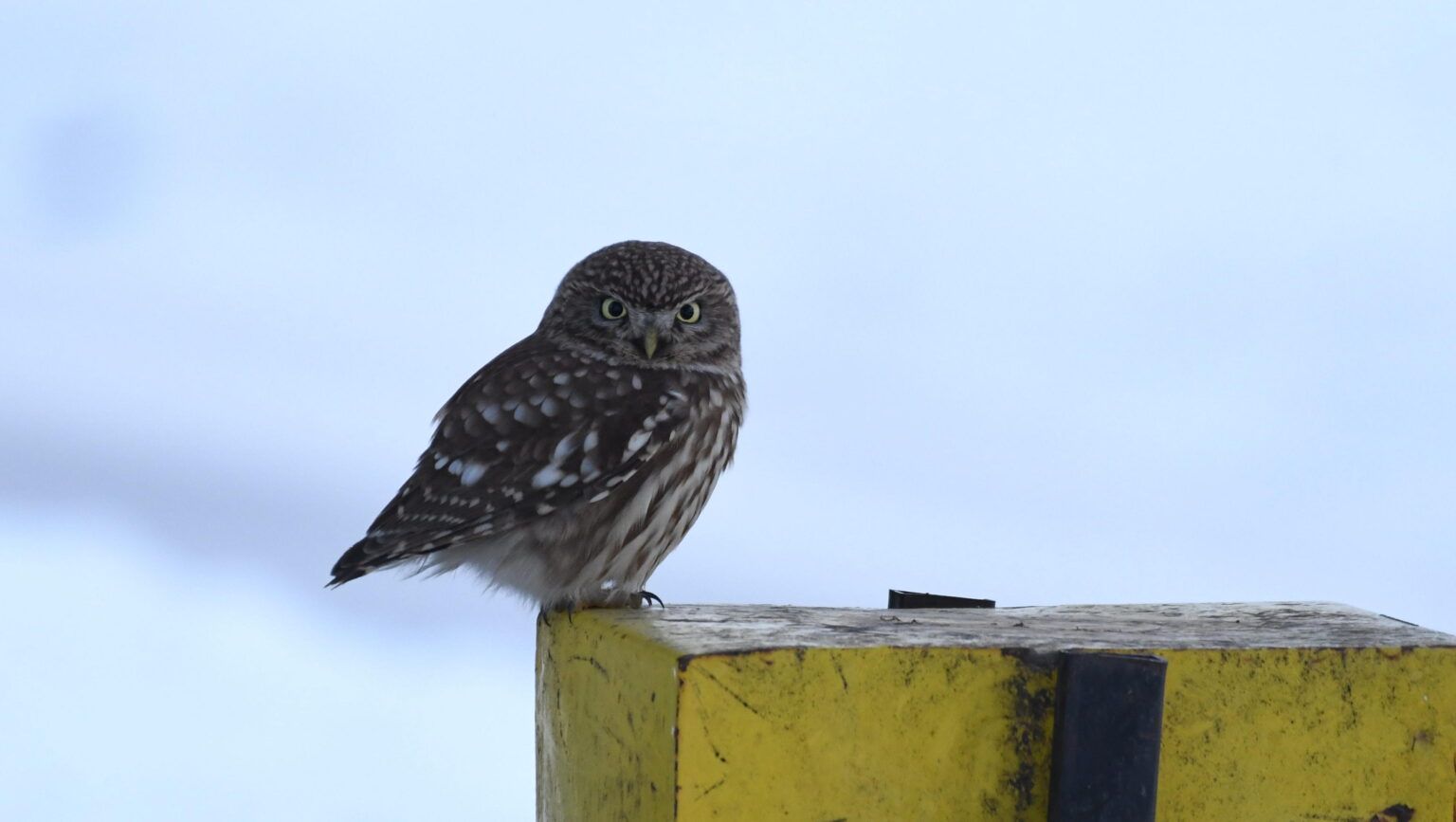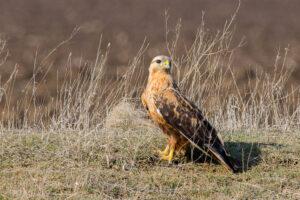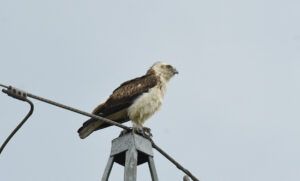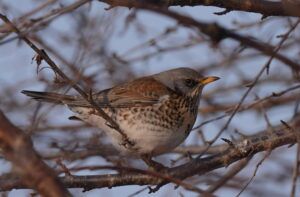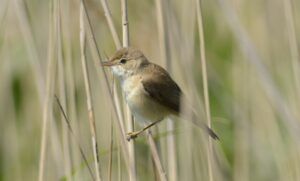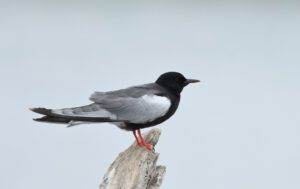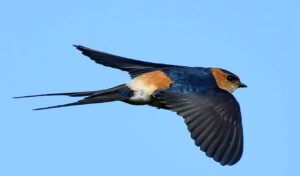The Little Owl (Athene noctua) is a bird which is resident in much of the temperate and warmer parts of Europe, Asia east to Korea, and north Africa. It is not native to Great Britain, but was first introduced in 1842, by Thomas Powys and is now naturalised there. It was also successfully introduced to the South Island of New Zealand in the early 20th century.
This species is a part of the larger grouping of owls known as typical owls, Strigidae, which contains most species of owl. The other grouping is the barn owls, Tytonidae.
The Little Owl is a small owl, 23-27.5 cm in length. The adult Little Owl of the most widespread form, the nominate A. n. noctua, is white-speckled brown above, and brown-streaked white below. It has a large head, long legs, and yellow eyes, and its white “eyebrows” give it a stern expression. This species has a bounding flight like a woodpecker. Juveniles are duller, and lack the adult’s white crown spots. The call is a querulous kee-ik.
There is a pale grey-brown Middle Eastern type known as Syrian Little Owl A. n. lilith. Other forms include another pale race, the north African A. n. desertae, and three intermediate subspecies, A. n. indigena of southeast Europe and Asia Minor, A. n. glaux in north Africa and southwest Asia, and A. n. bactriana of central Asia. A recent paper in the ornithological journal Dutch Birding (vol. 31: 35-37, 2009) has advocated splitting the southeastern races as a separate species Lilith’s Owl Athene glaux (with subspecies A. g. glaux, A. g. indigena, and A. g. lilith).
There are 13 recognized races of Little owl spread across Europe and Asia. The Little Owl was sacred to the goddess Athena, from whom it gets the generic name. This is one of the most distributed owls and, due to its adaptability to human settlements and small size, probably ranks among the world’s most numerous owl species.
This is a sedentary species which is found in open country such as mixed farmland and parkland. It takes prey such as insects, earthworms, amphibians, but also small birds and mammals. It can attack birds of considerable size like game birds. It is partly diurnal and often perches boldly and prominently during the day.
It becomes more vocal in nights as the breeding season approaches. Nest location varies based on the habitat, nests being found in holes in trees, rocks, cliffs, river banks, walls, buildings etc.It lays 3-5 eggs which are incubated by the female for 28–29 days, with a further 26 days to fledging. Little Owls will also nest in buildings, both abandoned and those fitted with custom owl nest boxes. If living in an area with a large amount of human activity, Little Owls may grow used to man and will remain on their perch, often in full view, while humans are around.
photo: Mihai BACIU

